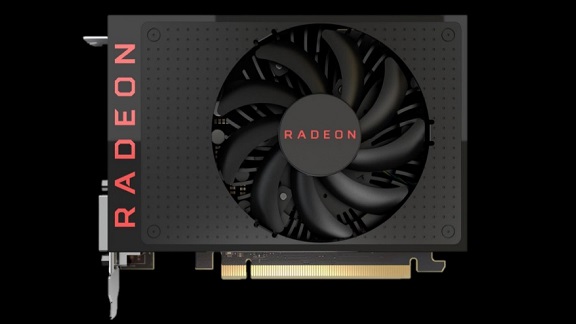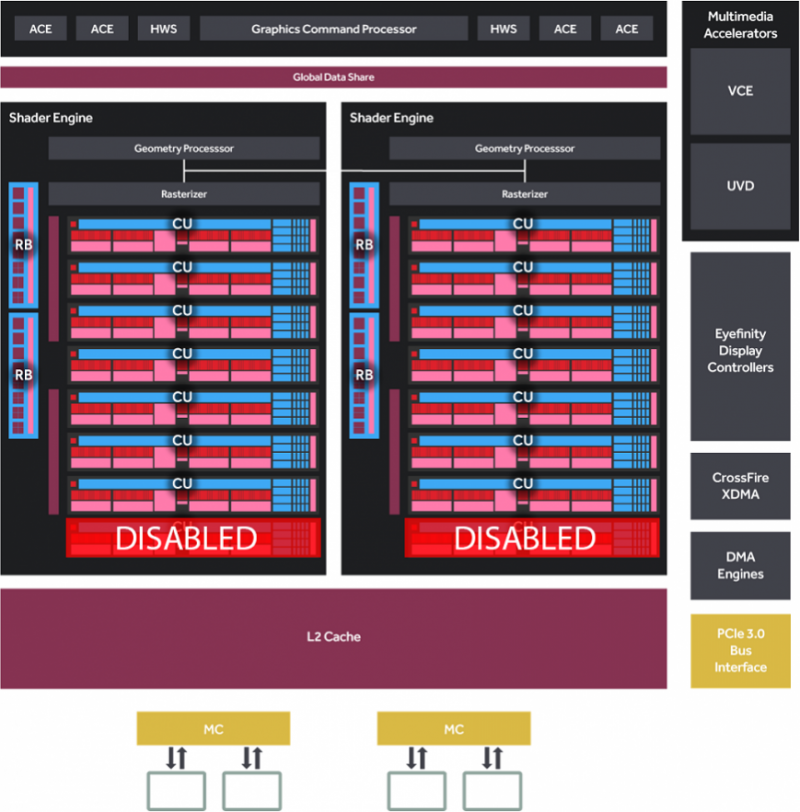Radeon RX 460

The Radeon RX 460, like its older relative, has all the advantages of the fourth generation GCN architecture, among which an important place is occupied by color compression with a ratio of up to 8:1, which allows more efficient use of RAM bus bandwidth. In addition, in Polaris 11 - compared to Bonaire - the L2 cache has been doubled (from 512 KB to 1 MB).
Of the other optimizations of the internal structure of the GPU, presented in GCN 1.4, we note the more efficient operation of the geometry engine, which is able to cut polygons of zero size or without pixels in the projection at the early stages of the pipeline. The work of the Compute Units has also been tuned to improve their specific performance.
The Polaris 11 chip features a seven scheduler configuration, first introduced in Tonga and Fiji GPUs: Graphics Command Processor for rendering commands, four ACEs (Asynchronous Compute Engine) for non-graphics computing, and two more HWS (Hardware Schedulers) blocks for calculation commands - they have the ability to interrupt the instruction execution chain to switch to a higher priority task.
In terms of functionality, Polaris' innovations include support for half-digit number formats - int16 and FP16 - used in computational tasks that do not require more precise representation (such as machine learning). A dedicated GPU codec allows hardware encoding and decoding of Main 10 and VP9 HEVC profile video at resolutions up to 4K.
Polaris 11 contains 16 Compute Units, in the Radeon RX 460 the manufacturer disabled two of them, which as a result equalized the video card in terms of the number of shader ALUs and texture units with a fully functional Bonaire implementation - the Radeon R7 260X. However, the RX 460 has a number of advantages in the form of an increased frequency of the GPU (1090-1200 MHz) and RAM (7 GHz effective frequency), as well as the official ability to equip the video card with 4 GB of memory. Recall: Radeon R7 260/260X/360 were limited to a maximum of 2 GB.
As a result, the RX 460 is only 9% superior to the R7 260X in terms of the theoretical processing power of the FP32. However, in games the difference will probably be greater due to the optimizations of the GCN microarchitecture. Well, compared to the Radeon R7 360, built on the “stripped down” Bonaire GPU, the RX 460 offers a 33% higher theoretical performance.
The Radeon RX 460 has a TDP of less than 75W - not too impressive, but a significant improvement over the R7 260X and R7 360 (115W and 110W, respectively). This allows RX 460 graphics cards to do without an additional power connector, using only the power lines in the PCI-Express slot.
Radeon RX 460 Specifications
|
|
||||||
|
Chip
|
||||||
|
Frequencies
|
||||||
|
Memory
|
||||||
|
Interface and TDP
|
RX 460 graphics cards use only 8 PCI-Express version 3.0 lanes for data transfer. The RX 460 has become a mainstream, affordable product with enough performance for low-demand multiplayer games like World of Warcraft, World of Tanks, DOTA 2 and more.




